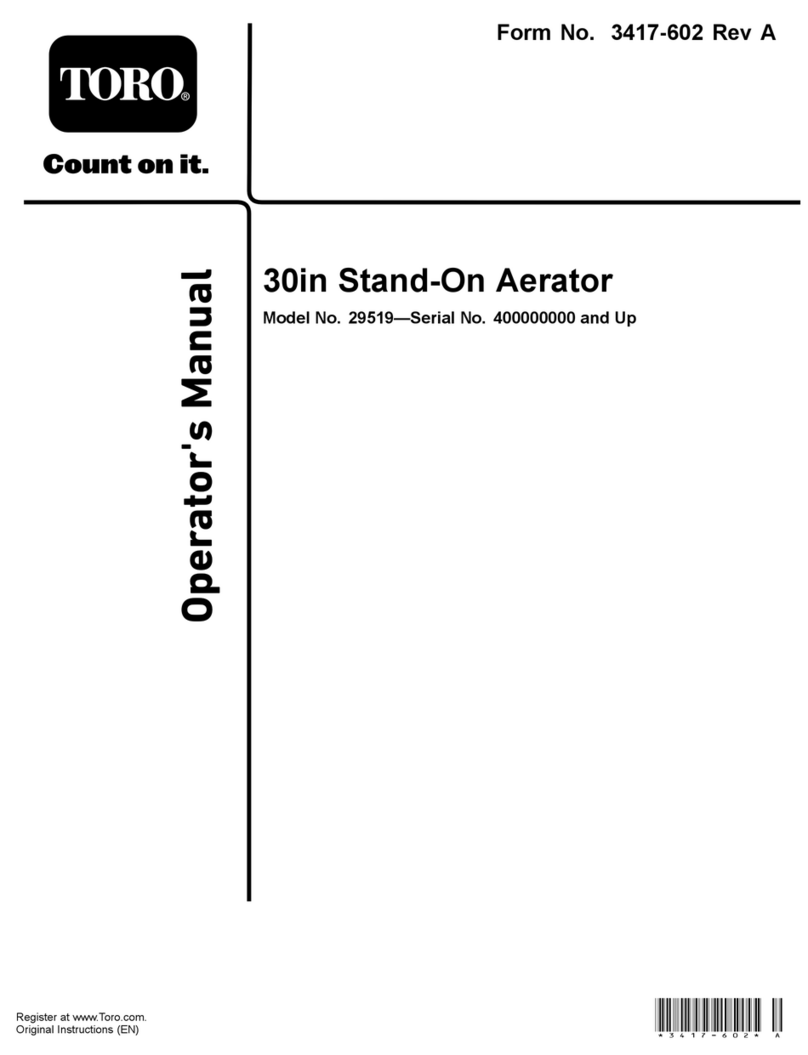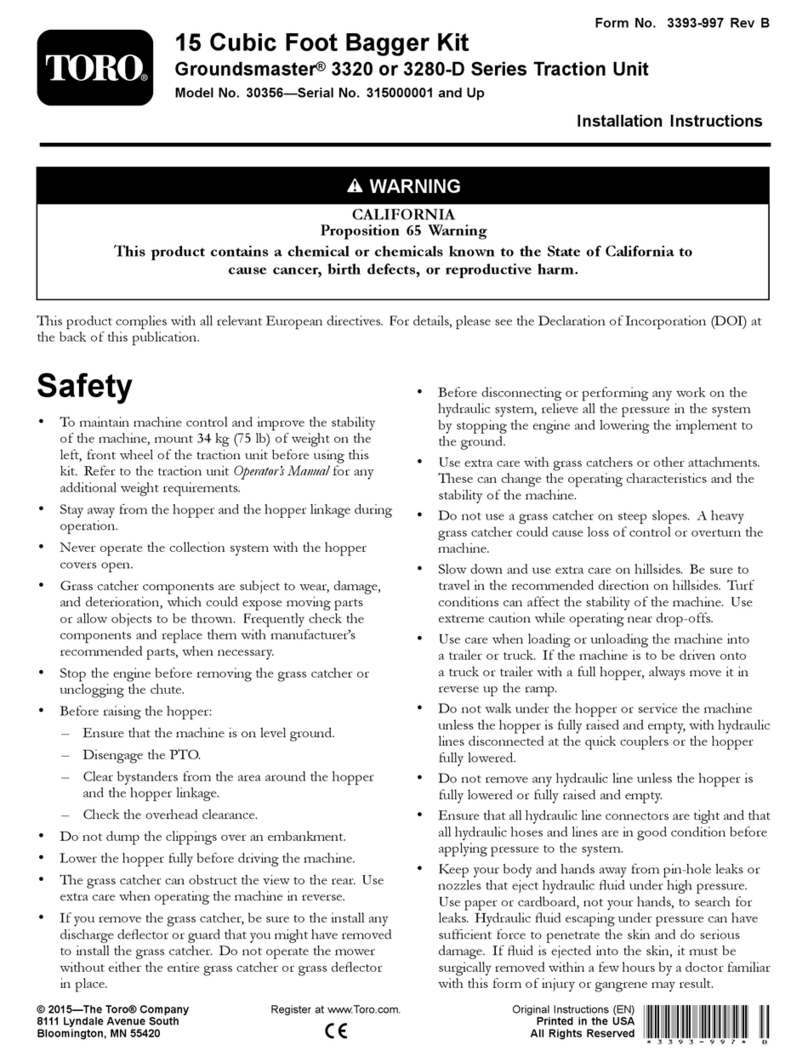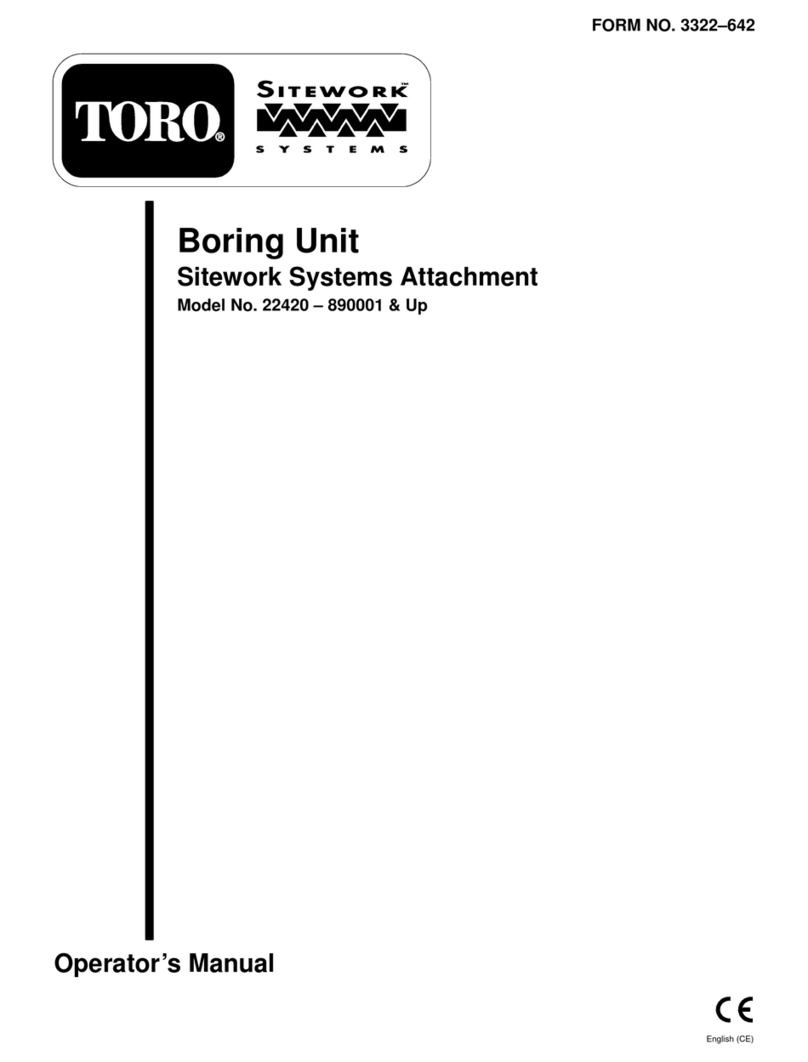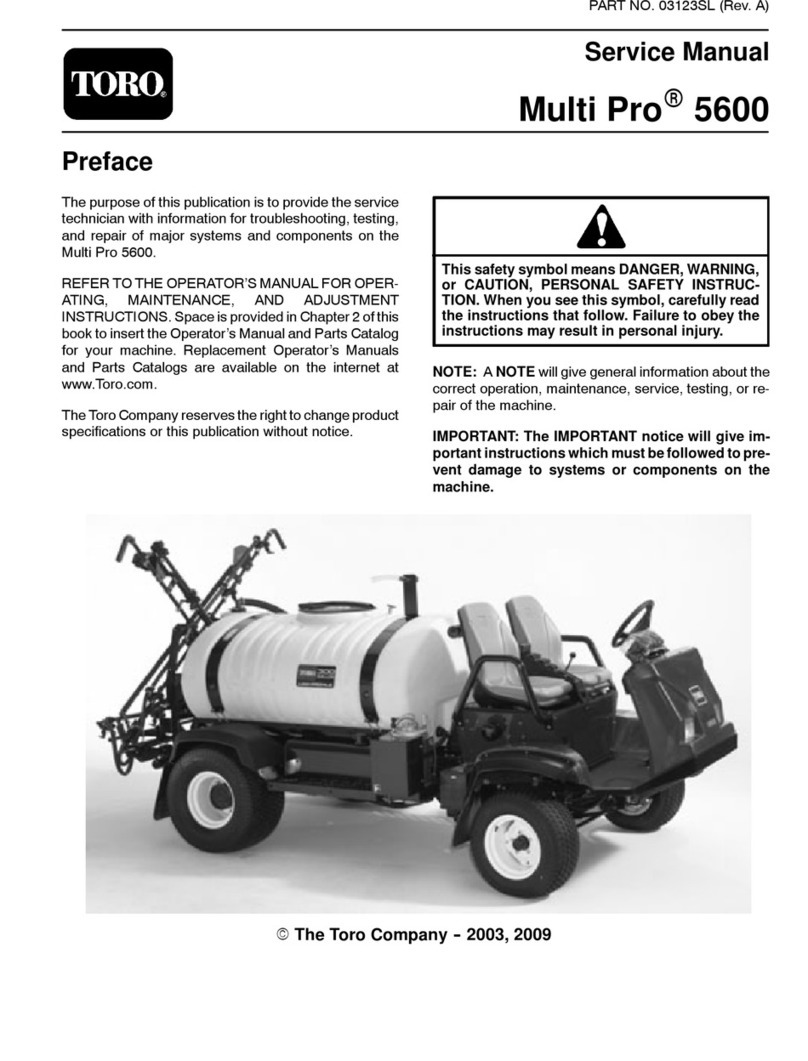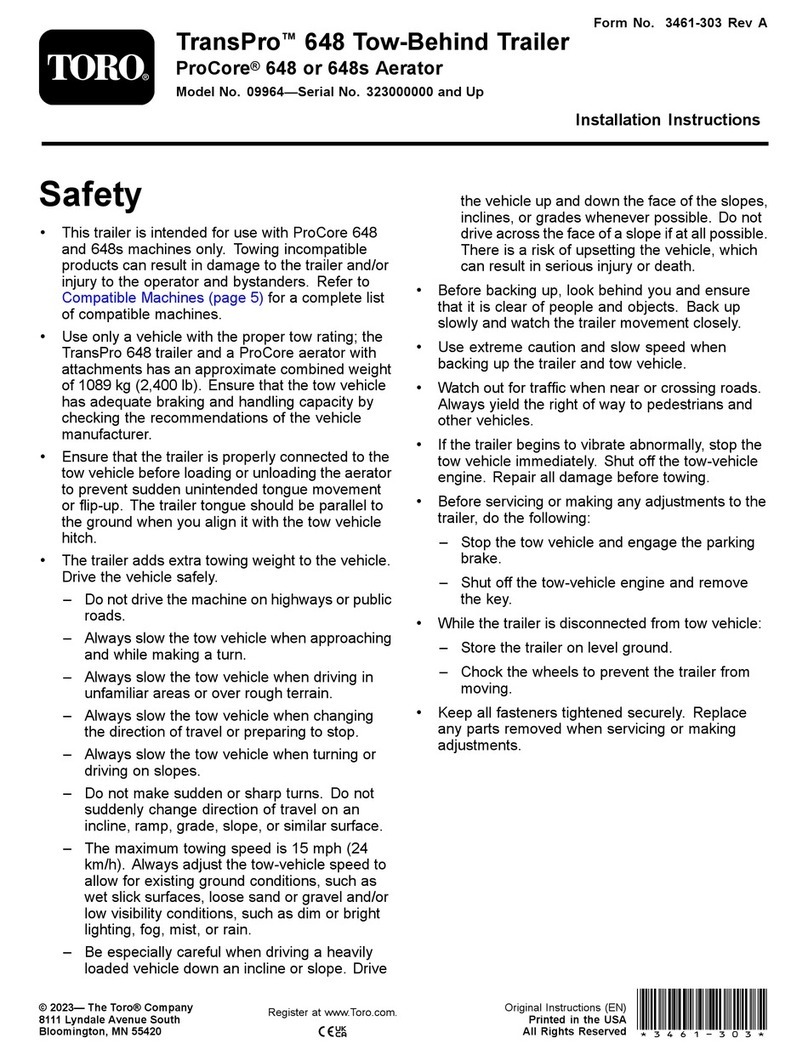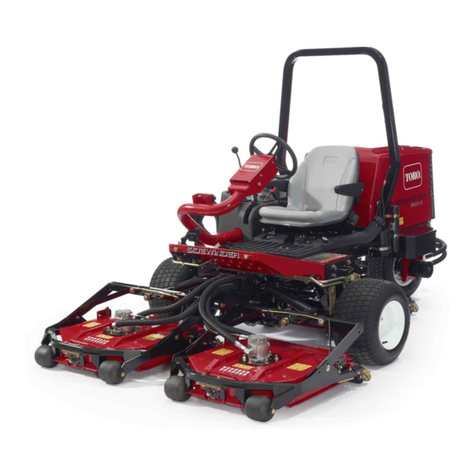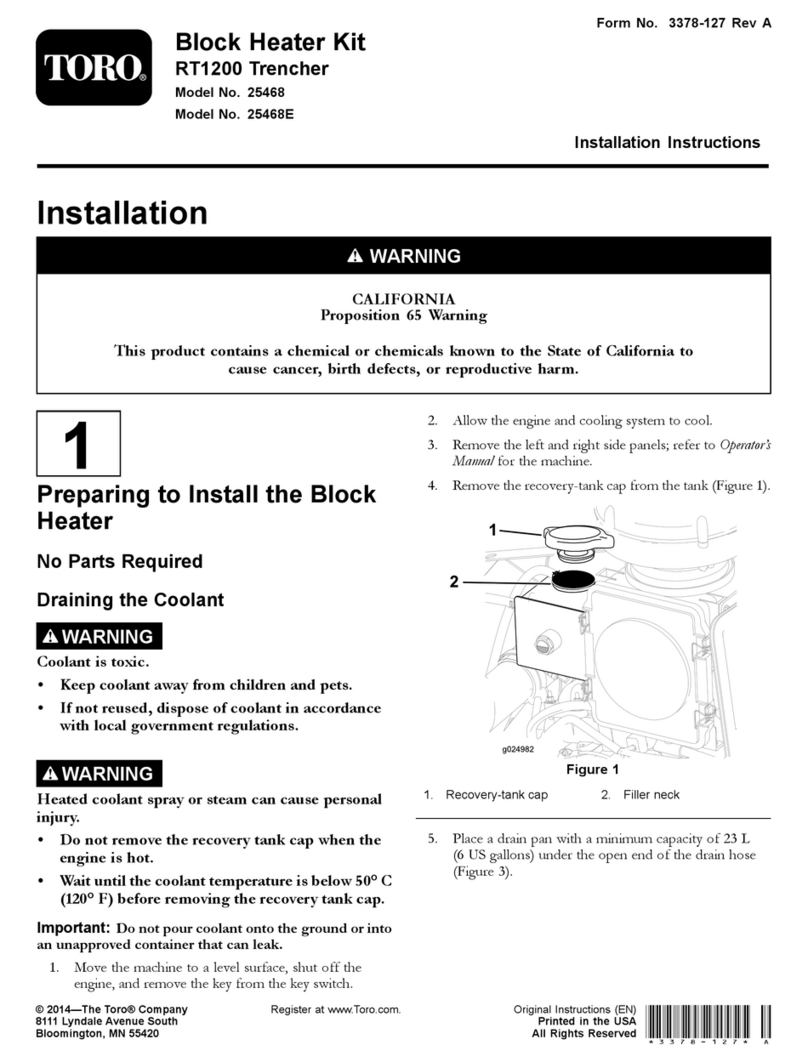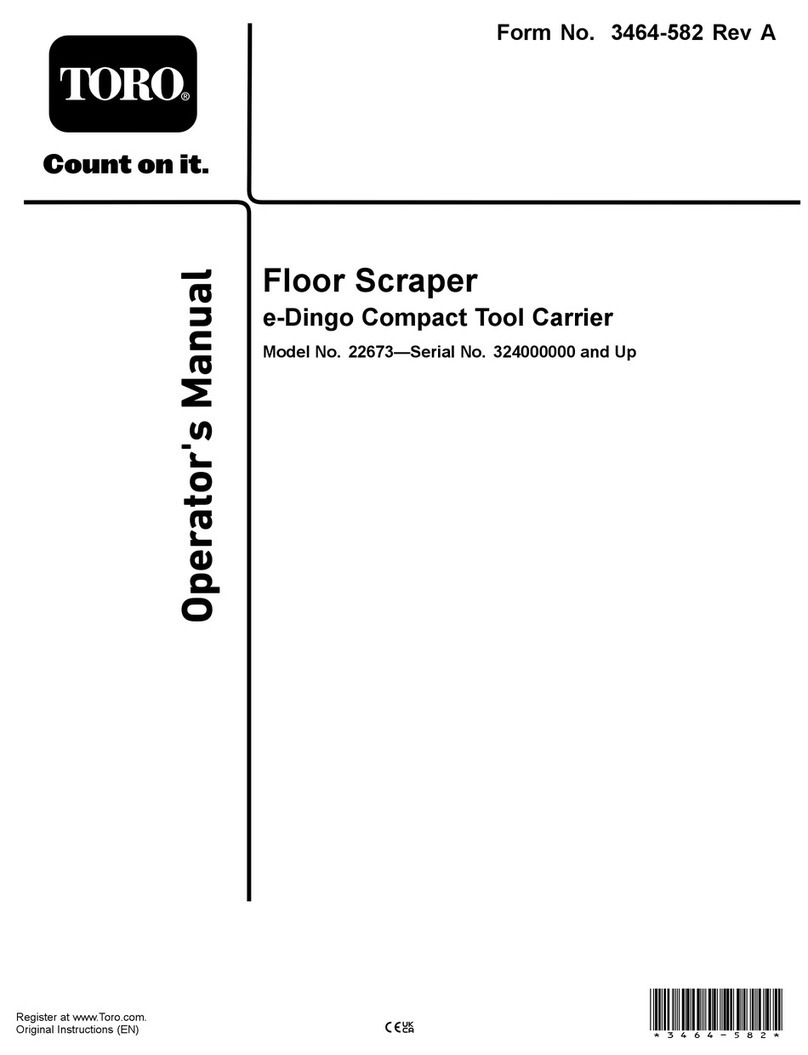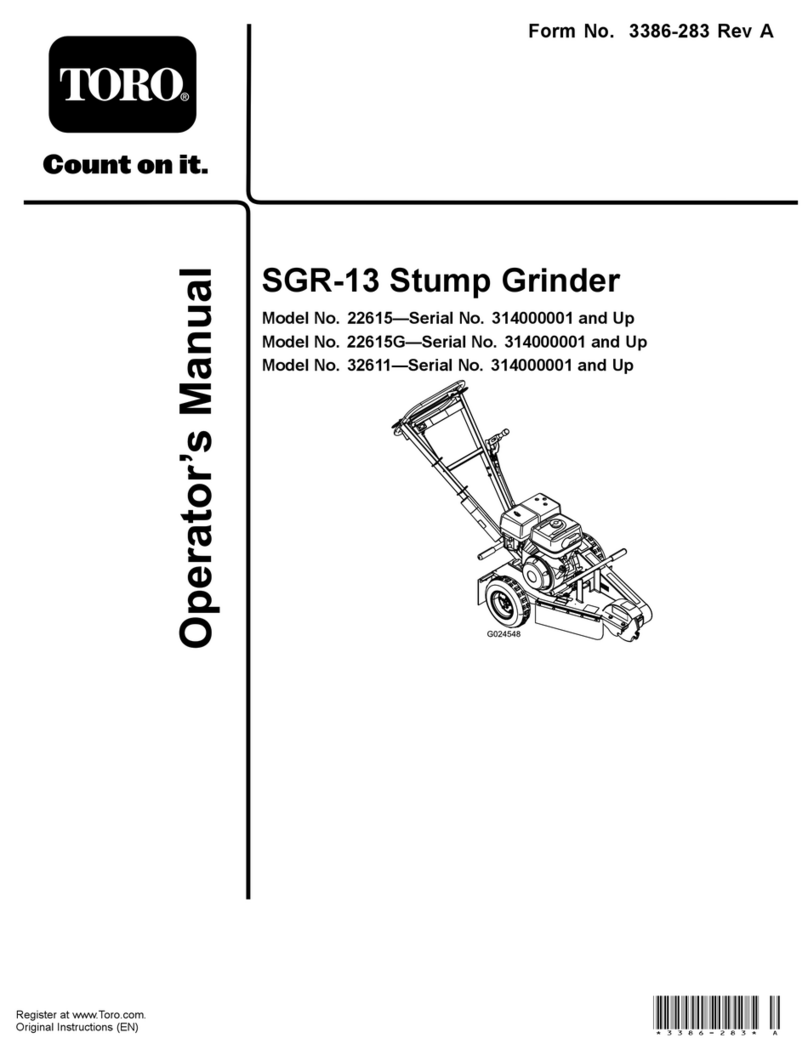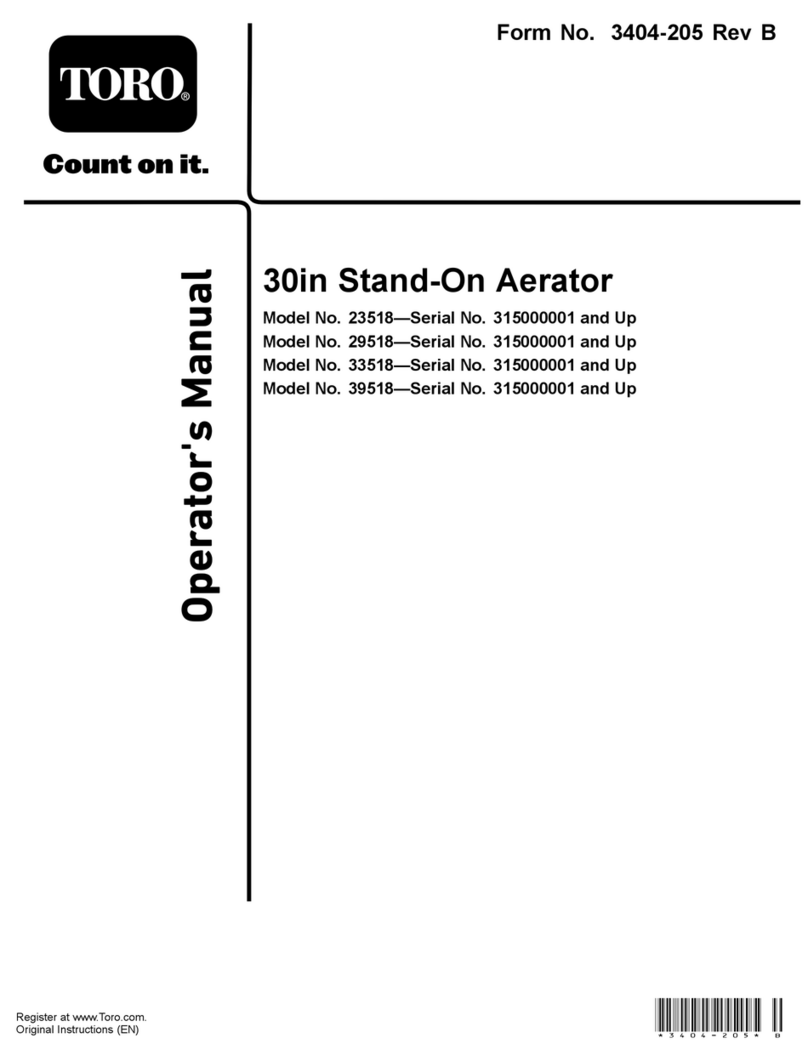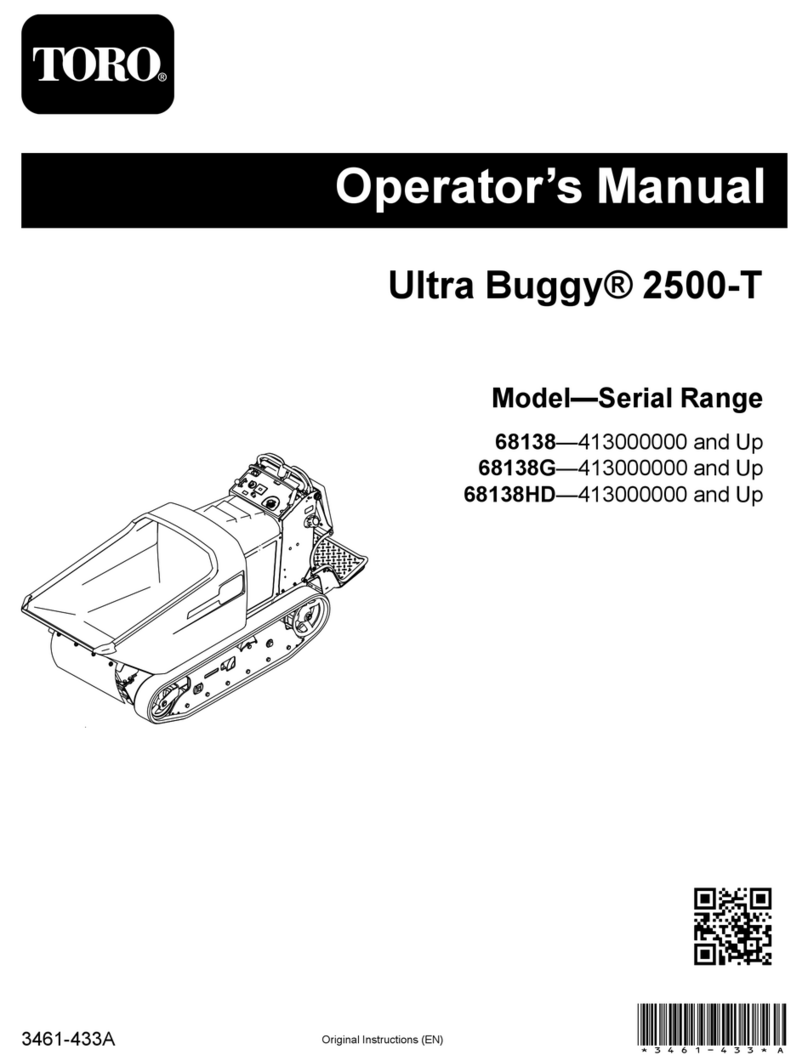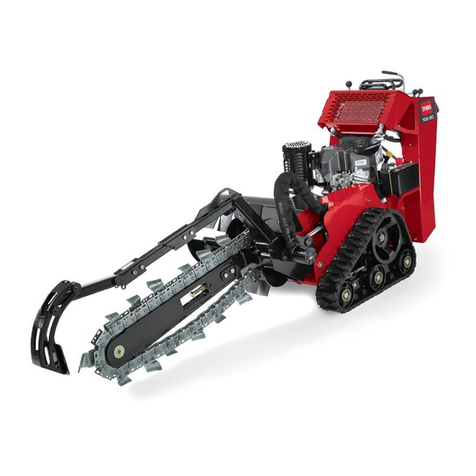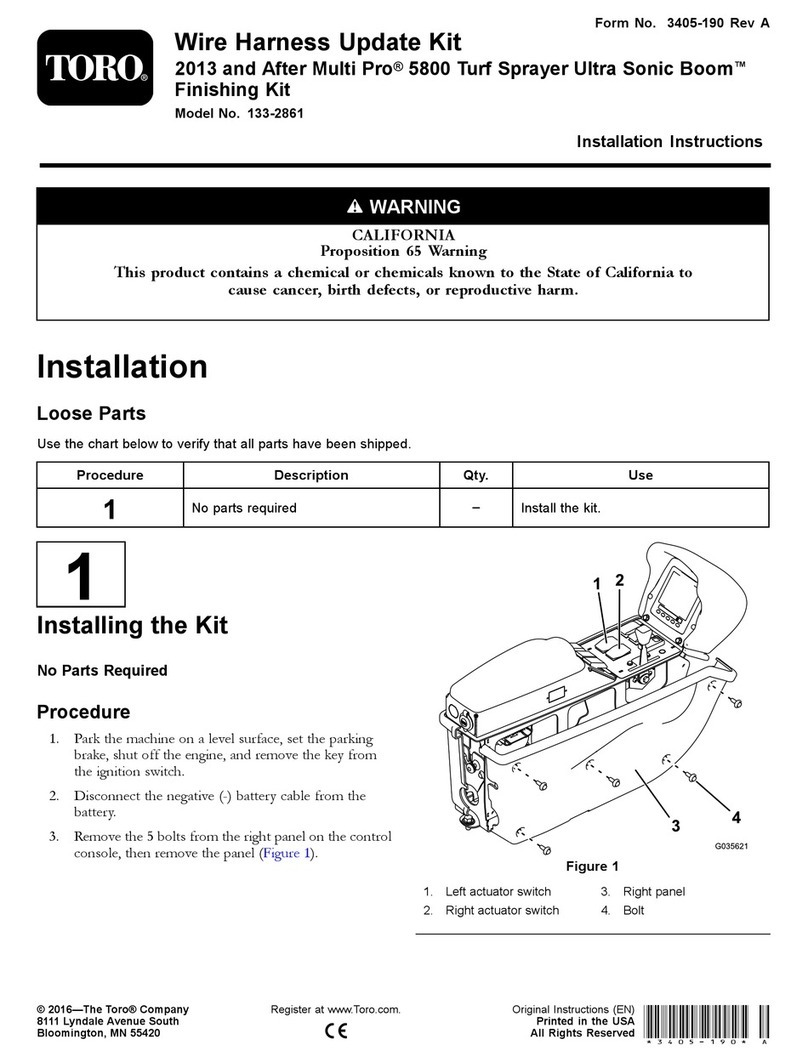
•Neveroperatewiththeguardsnotsecurelyinplace.Be
sureallinterlocksareattached,adjustedproperly,and
functioningproperty.
•Donotexceedtheratedoperatingcapacityofthe
machine,asthemachinemaybecomeunstablewhichmay
resultinlossofcontrol.
•Donotchangetheenginegovernorsettingoroverspeed
theengine.
•Usecarewhenloadingorunloadingthemachineintoa
trailerortruck.
•Neverleavethemachinerunningunattended.Always
stoptheengine,settheparkingbrake,andremovethe
keybeforeleaving.
•Neverjerkthecontrols;useasteadymotion.
•Watchfortrafcwhenoperatingnearorcrossing
roadways.
•Donottouchpartswhichmaybehotfromoperation.
Allowthemtocoolbeforeattemptingtomaintain,adjust,
orservice.
•Checkforoverheadclearances(i.e.branches,doorways,
electricalwires)beforedrivingunderanyobjectsanddo
notcontactthem.
•Ensurethatyouoperatethemachineinareaswhere
therearenoobstaclesincloseproximitytotheoperator.
Failuretomaintainadequatedistancefromtrees,walls,
andotherbarriersmayresultininjuryasthemachine
backsupduringoperationiftheoperatorisnotattentive
tothesurroundings.Onlyoperatetheunitinareaswhere
thereissufcientclearancefortheoperatortosafely
maneuvertheproduct.
•Lightningcancausesevereinjuryordeath.Iflightning
isseenorthunderisheardinthearea,donotoperate
themachine;seekshelter.
SlopeOperation
Slopesareamajorfactorrelatedtoloss-of-controland
tip-overaccidents,whichcanresultinsevereinjuryordeath.
Allslopesrequireextracaution.
•Donotparkthemachineonahillsideorslope.
•Ifpossible,avoiddrivingthemachineacrossaslope.
Whencrossingaslopeisnecessary,drivethemachine
straightuptheslope,acrossthetop,andthenstraight
downtheslope.
•Slowdownandusecautionwhenmakingturnsandwhen
changingdirectionsonslopes.
•Donotoperatethemachineonhillsidesorslopes
exceedingtheanglesrecommendedinStabilityData
(page6).SeealsotheSlopeChart(page7)andTiltChart
(page8).
•Neveroperatethemachinewiththevibrationfunction
On,andmovingupordownagradethatisgreaterthan
45percent(24°).
•Neveroperatethemachinewiththevibrationfunction
Off,andmovingupordownagradethatisgreaterthan
55percent(29°).
•Neveroperatethemachinewiththevibrationfunction
Off,andmovingacrossthesideofahillwithagradethat
isgreaterthan18percent(10°).
•Removeobstaclessuchasrocks,treelimbs,etc.fromthe
workarea.Watchforholes,ruts,orbumps,asuneven
terraincouldoverturnthemachine.Tallgrasscanhide
obstacles.
•UseonlyToro-approvedattachments.Attachmentscan
changethestabilityandtheoperatingcharacteristics
ofthemachine.Warrantymaybevoidedifusedwith
unapprovedattachments.
•Avoidstartingorstoppingonaslope.Ifthemachine
losestraction,ensurethatthevibrationfunctionisturned
totheOffpositionandproceedslowly,straightdown
theslope.
•Avoidturningonslopes.Ifyoumustturn,turnslowly.
•Donotoperateneardrop-offs,ditches,orembankments.
Themachinecouldsuddenlyturnoverifadrumgoes
overtheedgeofaclifforditch,orifanedgecavesin.
•Donotoperateonwetgrass.Reducedtractioncould
causesliding.
MaintenanceandStorage
•Parkthemachineonalevelsurface,settheparking
brake,stoptheengine,andremovethekey.Waitforall
movementtostopbeforeadjusting,cleaning,orrepairing.
•Cleandebrisfromthedrives,mufer,andengineto
helppreventres.Cleanupfuel,oil,andhydraulicuid
spillage.
•Lettheenginecoolbeforestoringanddonotstorenear
ame.
•Donotstorefuelnearamesordrainindoors.
•Neverallowuntrainedpersonneltoservicethemachine.
•Usejackstandstosupportcomponentsofthemachine
whenrequired.
•Carefullyreleasepressurefromcomponentswithstored
energy.
•Disconnectthebatterybeforemakinganyrepairs.
Disconnectthenegativeterminalrstandthepositive
last.Reconnectpositiverstandnegativelast.
•Keephandsandfeetawayfrommovingparts.Ifpossible,
donotmakeadjustmentswiththeenginerunning.
•Chargebatteriesinanopenwellventilatedarea,away
fromsparkandames.Unplugthechargerbefore
connectingordisconnectingitfromthebattery.Wear
protectiveclothinganduseinsulatedtools.
•Keepallpartsingoodworkingconditionandallhardware
tightened.Replaceallwornordamageddecals.
5
